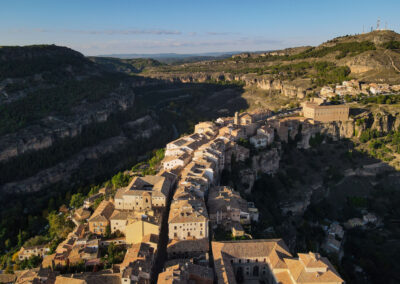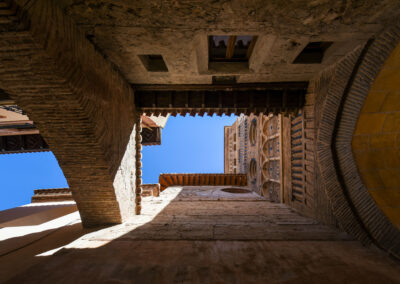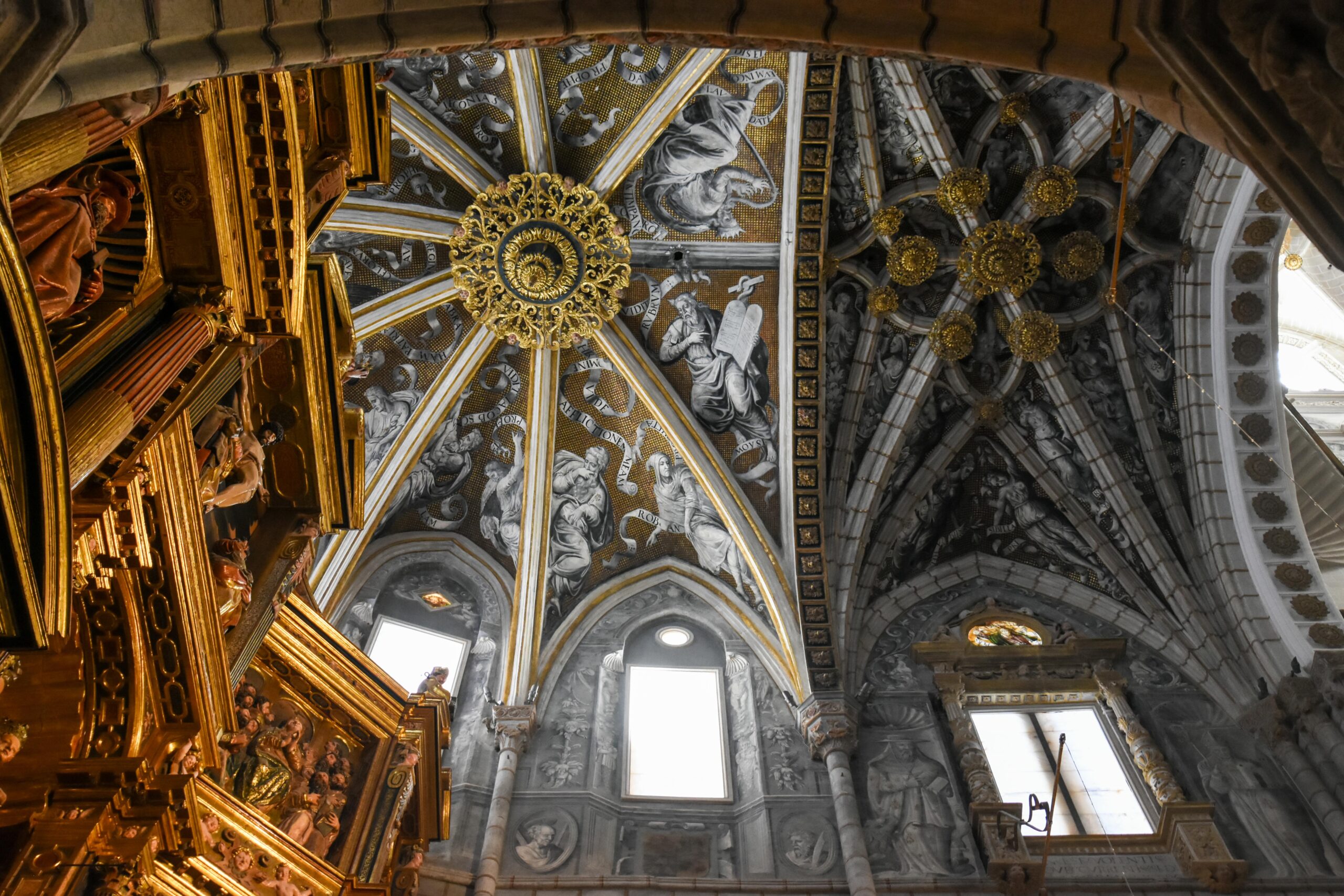José lives in Zaragoza but says he is from Cuenca, where he lived from the age of 15 to 18 and where his mother lives. So, when I decided that I was going to visit him in the capital of Aragon, we decided that we would finish this tour in Cuenca. But between Zaragoza and Cuenca there is another city that is well worth visiting, and so we did: Teruel, the capital of Mudejar!
.
José spoke with Javi, a friend from university who has just moved to Teruel, who agreed to accommodate us for one night. So we took the train from Zaragoza to Teruel, whose station is located in front of one of the city’s biggest attractions, the neo-Mudejar Óvalo Stairwell. Fortunately, there is also an elevator next to it, to overcome the height difference. We went to Javi’s house to leave our belongings and headed to the Cathedral of Santa Maria, part of the Mudejar estate, UNESCO World Heritage. When we got there, they told us that it was only possible to visit it in the afternoon, and suggested us to visit the Provincial Museum. And what a beautiful visit, what an incredible museum, especially compared to the Provincial Museum of Zaragoza, which is very poor. In the Museum of Teruel we could see hundreds of archeology pieces, from prehistory to the Christian kingdoms, passing by objects from the Iberian, Roman, Visigoth and Arab cultures; ethnography, with utensils, clothing, ceramics and traditional handicrafts; and paleontology, in addition to the incredible roof terrace, overlooking the city’s rooftops, the cathedral and some of the Mudejar towers that dot Teruel!






We ate some tapas in El Torico Square, the heart of the city, but we needed some time before the Cathedral reopens, so we headed back to the Óvalo Staircase to take some pictures, passing the incredible Tower of Salvador, one of the four Mudejar towers in the city, that still exist, and that I would climb later. Along the walk through the small center, we also passed the Tower of San Pedro and saw the Tower of San Martin, two of the other towers, in the distance. The third is the cathedral.








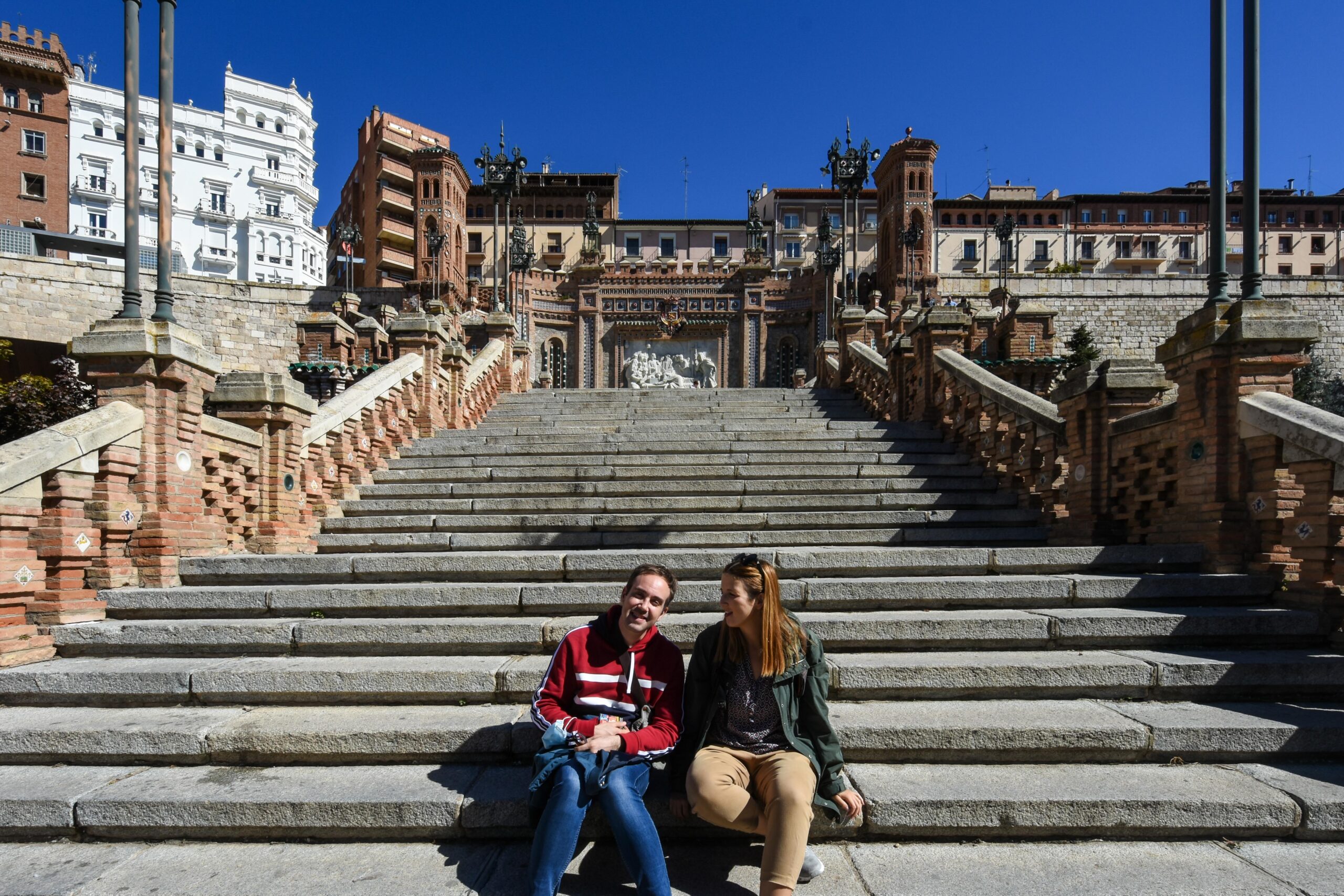



It was finally time to visit the Cathedral of Santa Maria. The visit would be guided and we couldn’t get a ticket for the first group, so they suggested that we visit the Diocesan Archive of Teruel, next door, while we waited for half an hour.
The great advantage of taking the guided tour of the cathedral is being able to go up to the choir gallery, in order to be very close to the dome and the very interesting Mudejar ceiling, all in painted wood, each beam with a different decoration, just amazing! The rest of the cathedral is quite normal



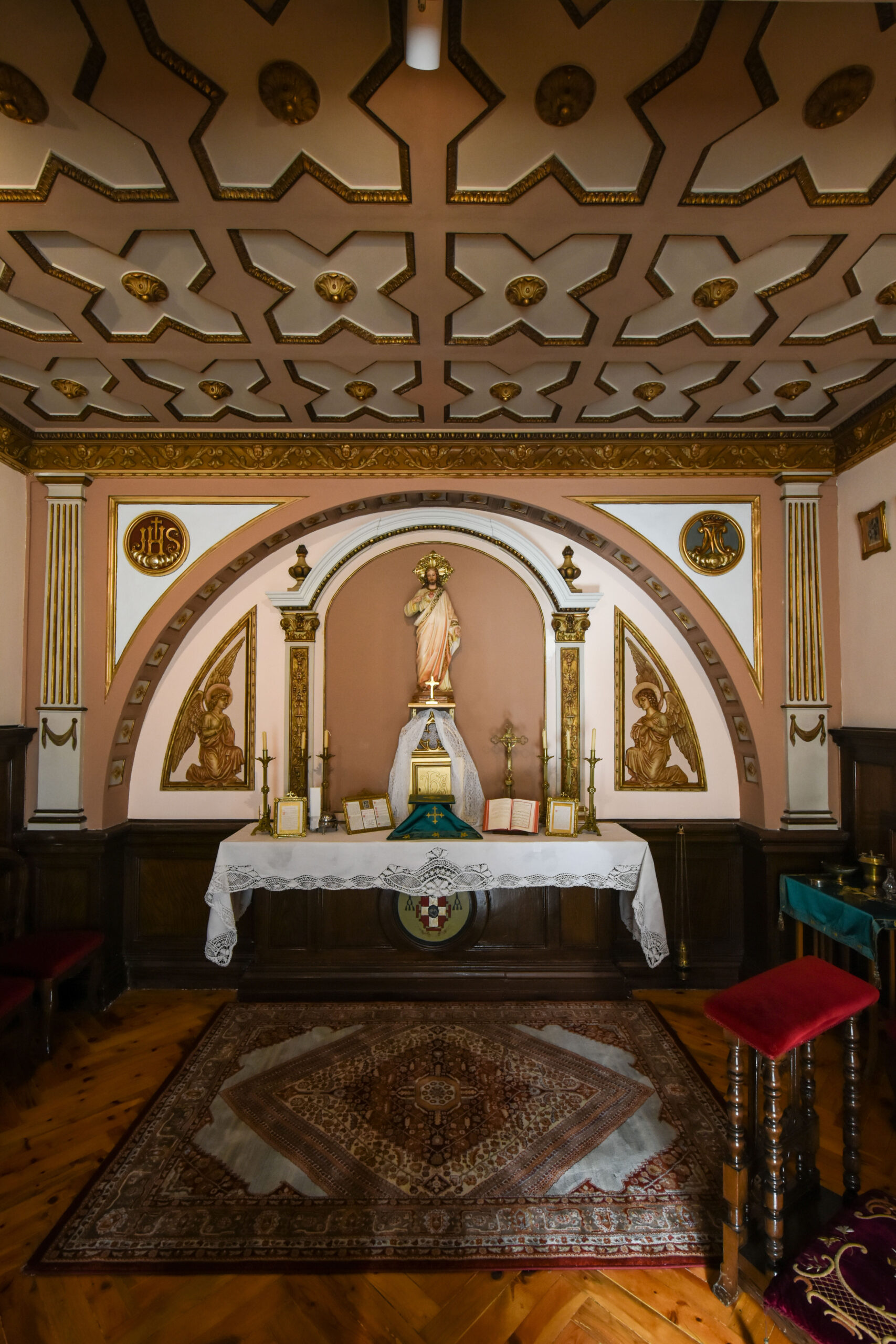



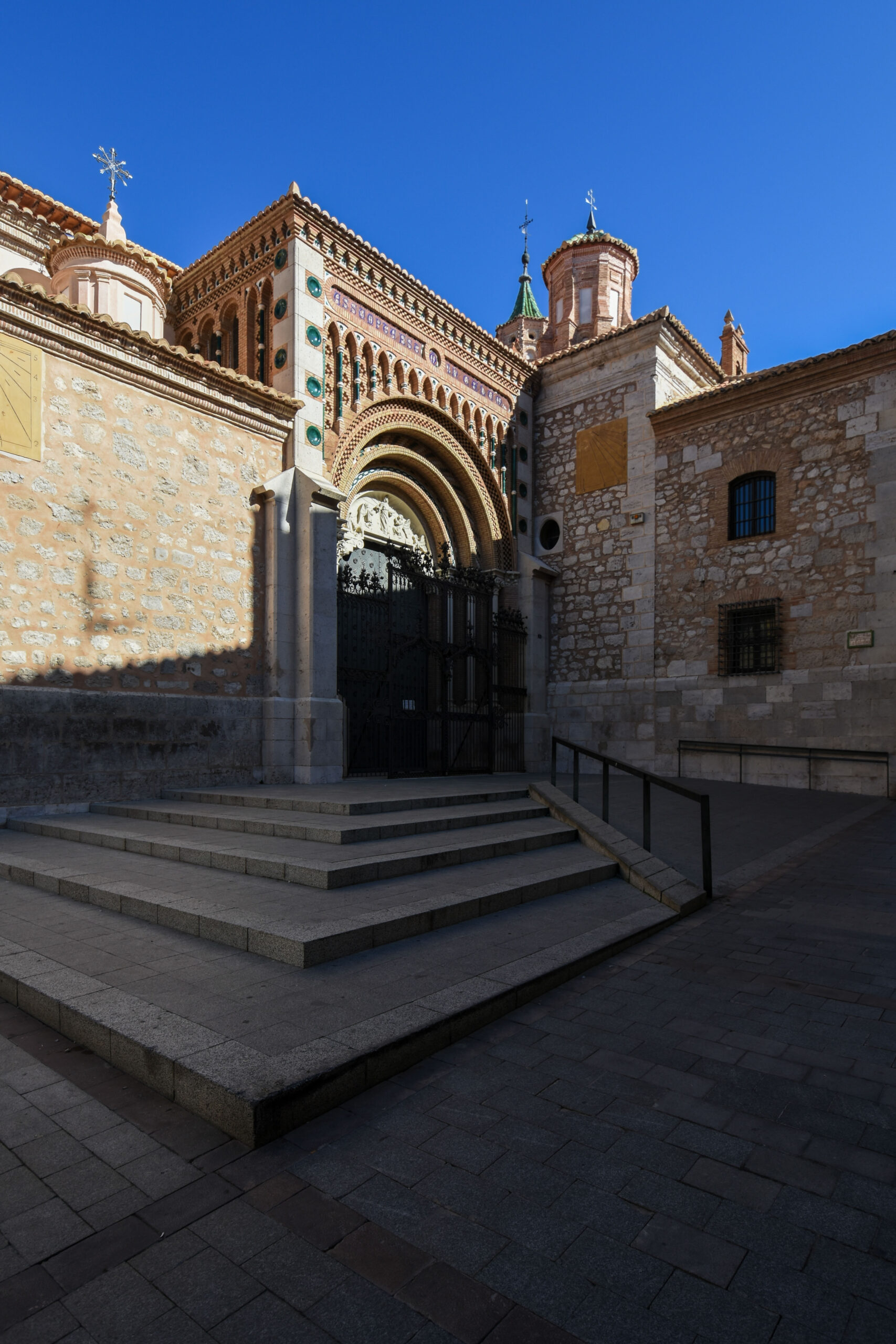





From there, we headed to another of Teruel’s greatest attractions: the Mausoleum of the Amantes (Lovers). The Lovers’ Mausoleum is located in the Church of San Pedro and was recently reopened, after an architectural project to renovate the space and receive the bodies (mummies) of these lovers. The ticket includes a visit to the mausoleum, the incredible church, the Mudejar cloister and the apse and gardens (the latter are actually free to access) and costs €9. For one euro more you can also go up to the tower and it includes a guided tour. Unfortunately, they no longer had places for guided tours for that day. So we started with the story of the lovers of Teruel.
THE LEGEND:
Once upon a time, in Teruel, in the 13th century, there was a rich merchant who had a beautiful daughter named Isabel de Segura. There was also a poor but honest boy named Diego de Marcilla. Isabel and Diego met one day at the market and fell deeply in love. The two loved each other very much, Diego confessed that he wanted to take her as his wife. She replied that it was her wish, but that she knew she would never do it without her parents’ approval. Diego told the maiden that since his father despised him only for lack of money, if she wanted to wait five years for him, he would be willing to seek his fortune where necessary to earn money and become worthy of marriage. And she promised so.
.
Against the Moors, Diego made a fortune of one hundred thousand wages. For five years, Isabel was pestered by her father to find a husband. After five years, her father gave her an ultimatum and she, seeing that the term of the five years was coming to an end, and her boyfriend did not appear or give any news, ended up believing that Diego was dead. Immediately her father found a rich suitor and they were married. However, that same day, Diego de Marcilla returned to Teruel. That night, Diego managed to enter the room where the bride and groom were sleeping and gently woke Isabel, begging, “Kiss me, or I’ll die,” and she replied with pain that she couldn’t, as she was a married woman. He said again, “Kiss me or I die.” She didn’t and he dropped dead.
.
She began to shiver and woke her husband telling him what had happened and how, with a sigh, Diego had died. He said that if people knew he had died there, they would say he had killed him and he would have a lot of problems. So she decided she had to kiss Diego before burying him; so she went to San Pedro church and didn’t care about anything but the dead man. She uncovered his face and kissed him so hard that she died right there. The ones who saw that she, who was not a relative, was lying on the dead man, went to tell her to leave but realized that she was also dead. Her husband told everyone what she had told them and they agreed to bury them in a joint grave, as a symbol of their love.

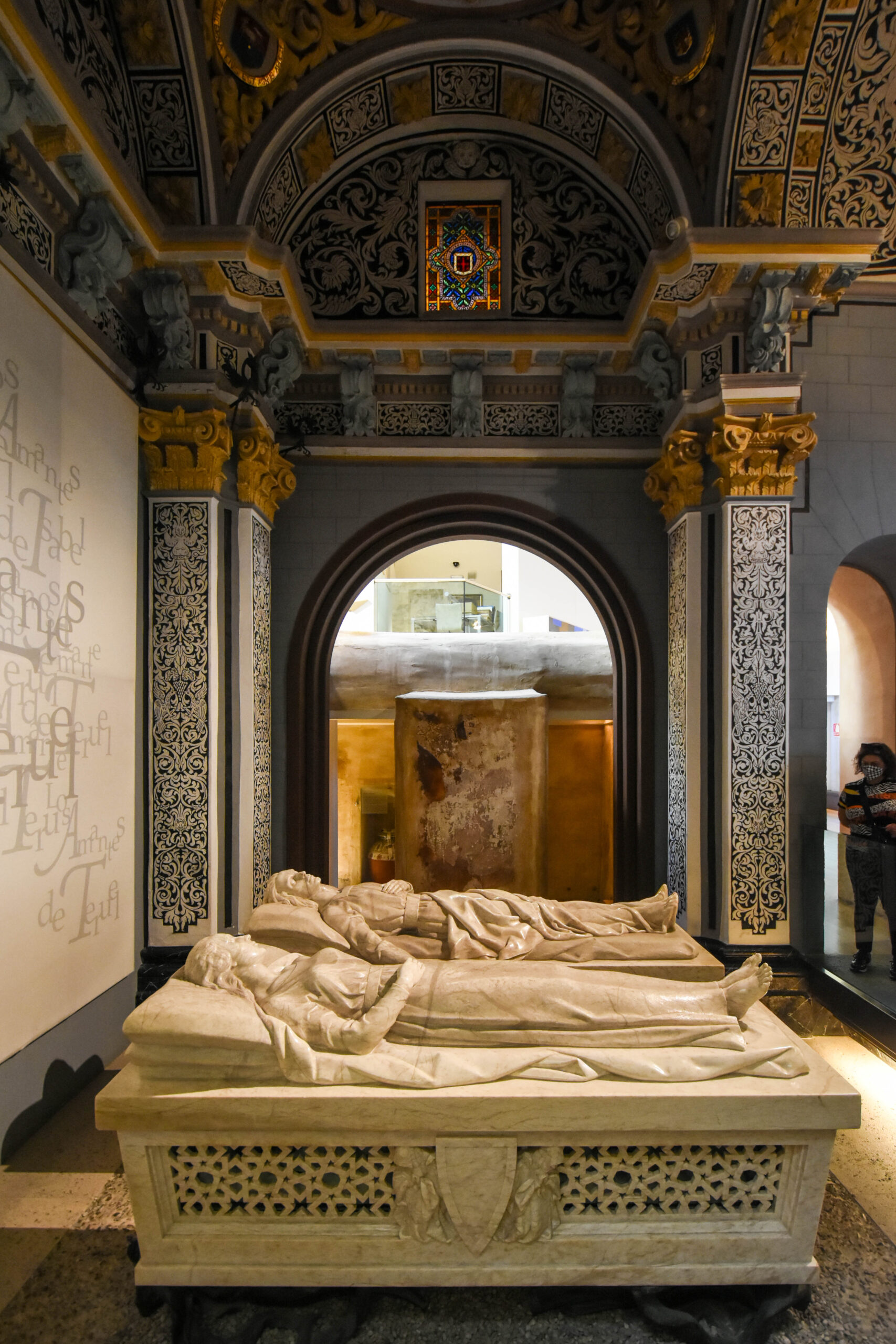




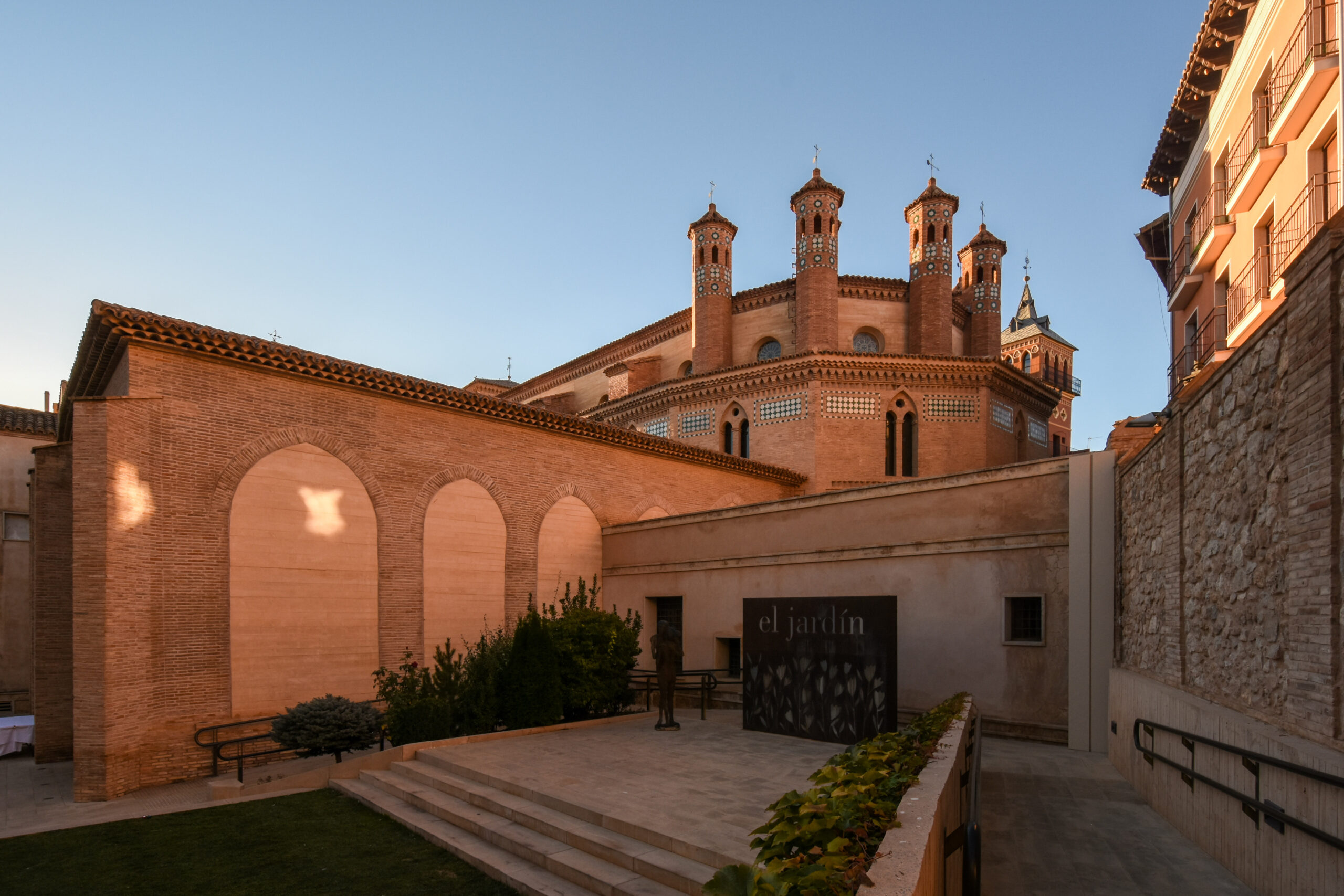

We ended the day with a sunset from the top of the Tower of Salvador. On the way up to the top, at 40m high, we find the Interpretation Center for Mudéjar Turolense Architecture. In the three exhibition halls, a review of the history and development of this unique architecture that mixes Muslim and Christian elements is carried out. The tower is incredibly beautiful, as you can see in the photographs, and has a 360º view over the entire city. Every hour, the bells ring (pretty loudly, we got a real fright!), so it’s fun to be up there when that happens.


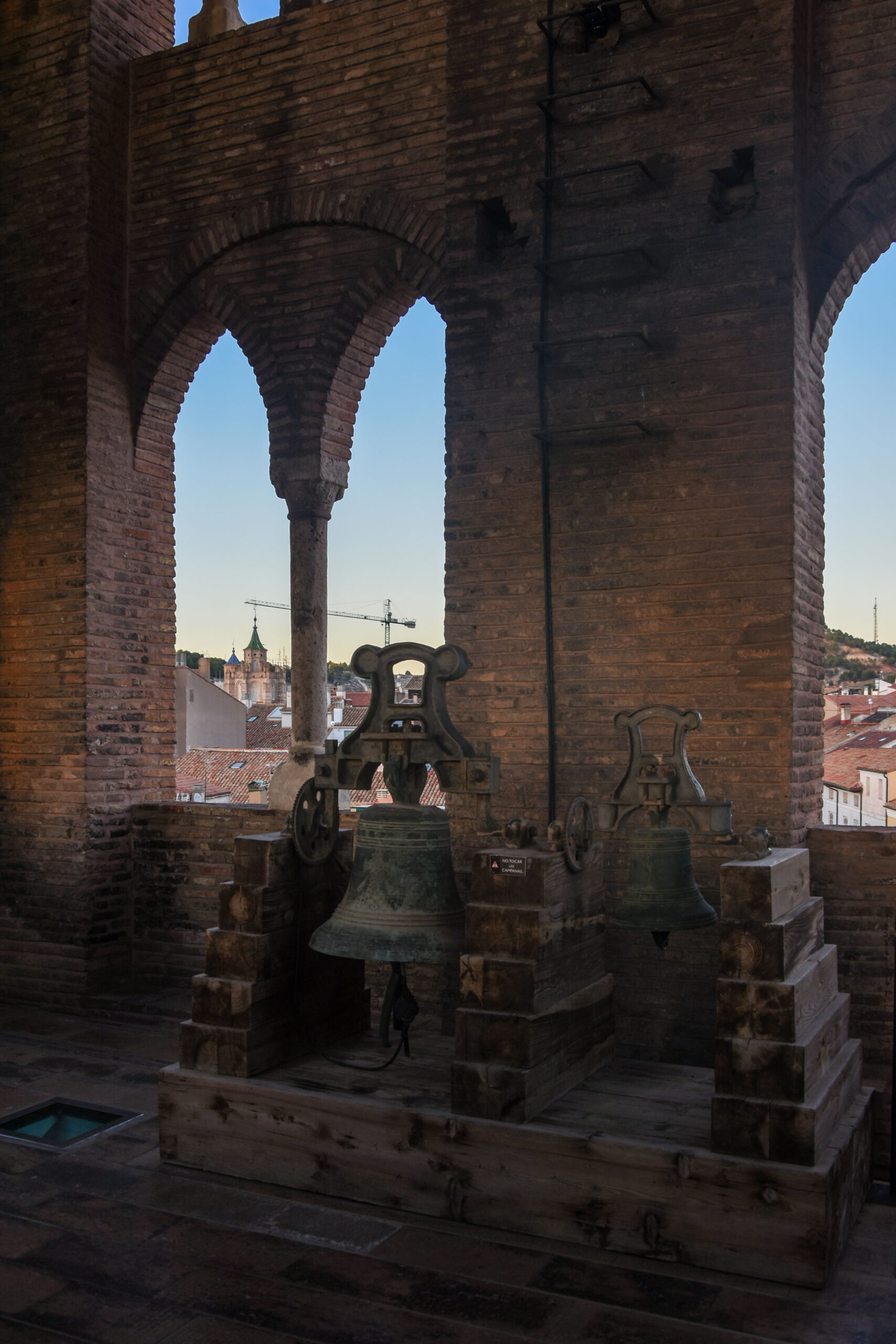



We ended up having dinner at home, as we were spending a lot of money on tickets to museums, churches, culture and went to bed early to enjoy the next morning, as in the afternoon we were heading to Cuenca, our final destination.
.
On the way to the walls, we passed the Aqueduct of Teruel, took some photos, and then went to the walls, which really aren’t much worth… They’re short, just renovated, so it looks like they were built yesterday, and without great views…



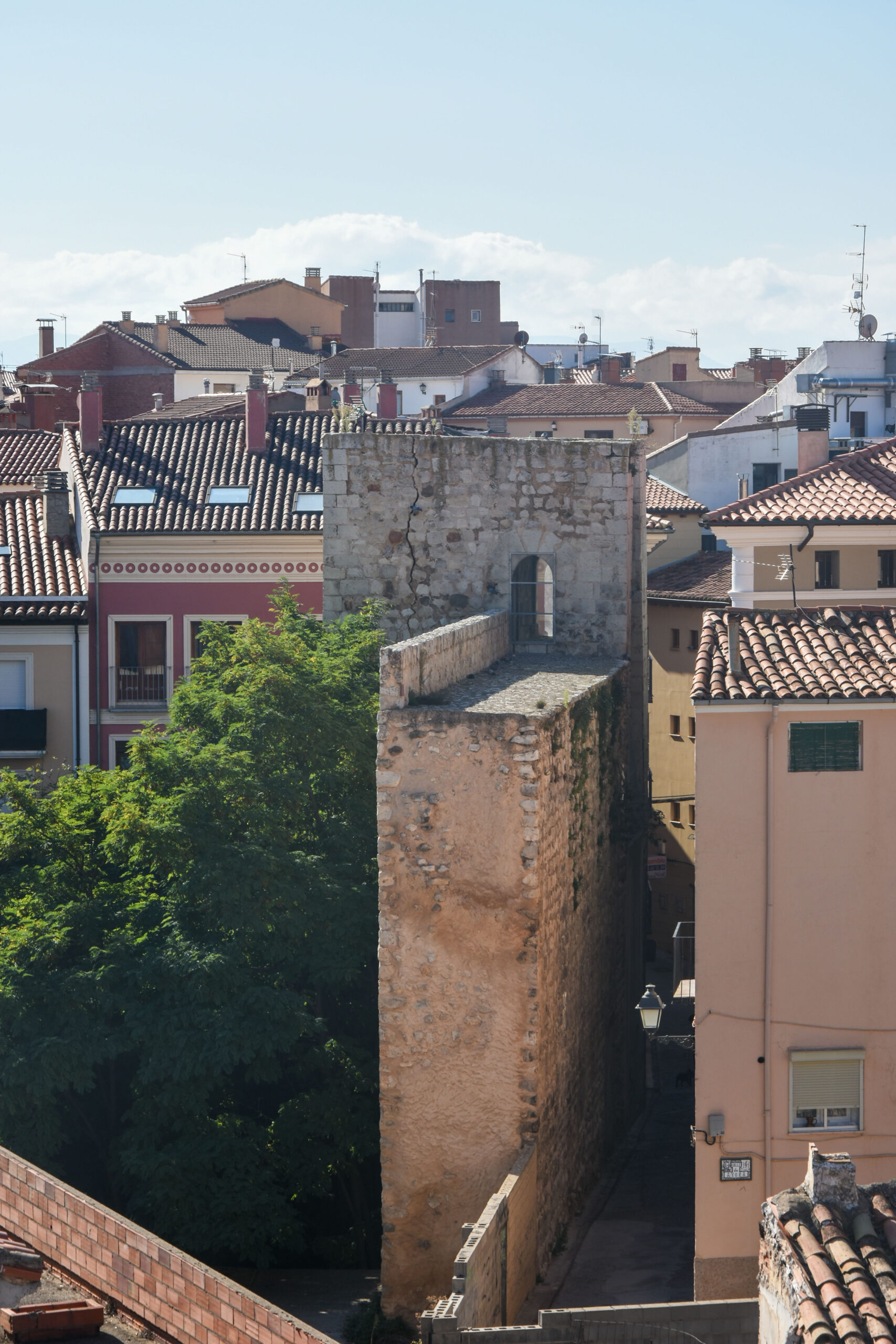
But there was still something to see up close in Teruel: the fourth Mudejar tower, that of San Martin, that looks exactly the same as the one of Salvador, but a little crooked. There’s even a story that involves two Moors fighting for the hand of a princess, who built two towers, to see who won her hand, but as San Martin’s was crooked, the boy threw himself from the tower… sad story aside, it was my favorite tower, because it’s the prettiest (even though it’s the same as the one of Salvador), but with the difference that it can be seen from more angles 🙂
.
All that was left for us to do was walk around the city for a bit more, eat a pincho de tortilla and drink vermouth at Óvalo, another walk, lunch at home, and time to leave for Cuenca, which would become my favorite city on this trip!




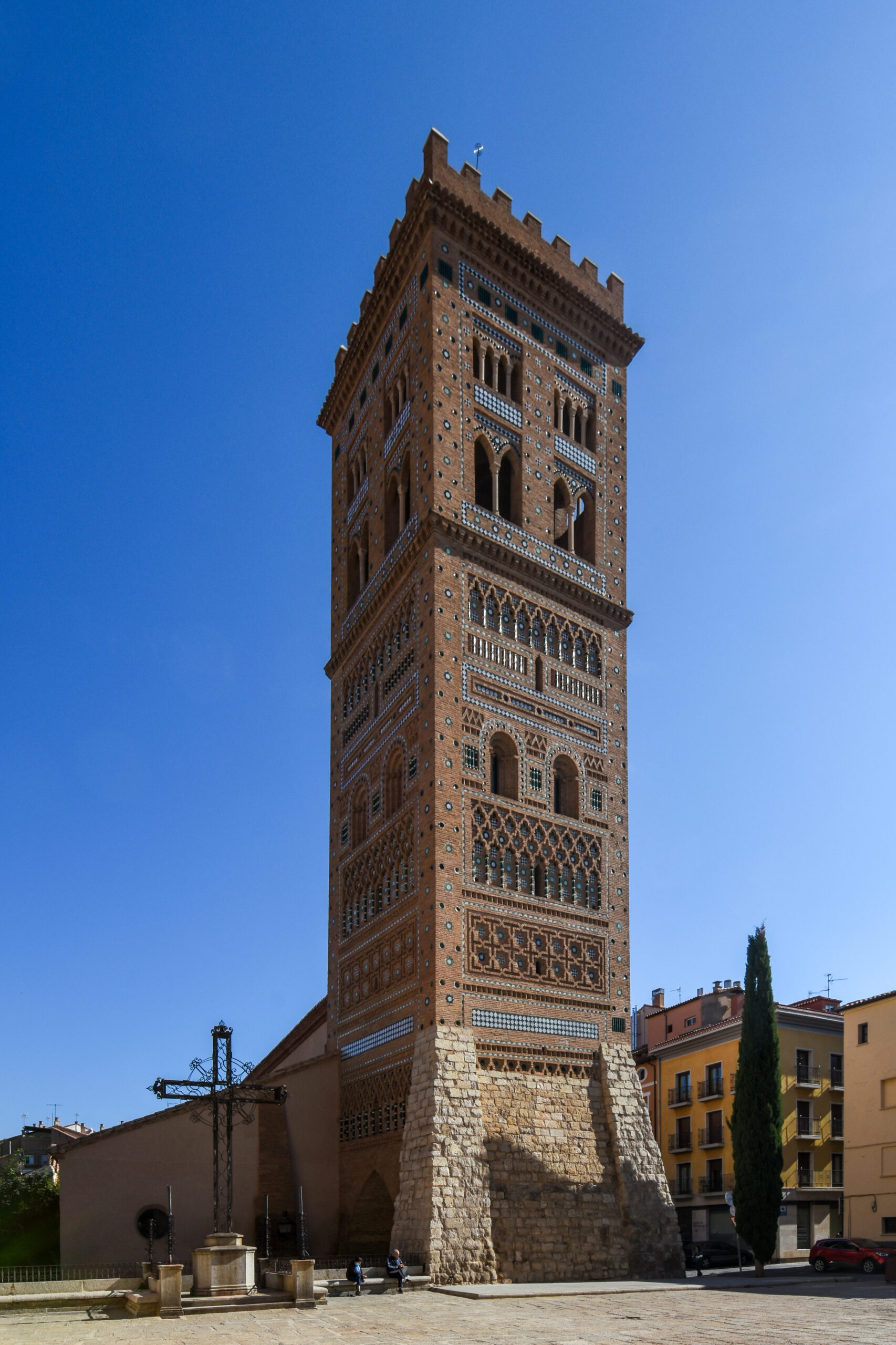
If you liked this post and want to read more about my trips to Spain, you can visit the following posts:



